Drennan R.D. Statistics for Archaeologists: A Common Sense Approach
Подождите немного. Документ загружается.


RELATING RANKS 225
each soil zone divided by the total number of square kilometers covered by that
zone to indicate how densely the zone was occupied, and we wish to investigate
whether more productive soil zones were more densely inhabited.
The first step in calculating Spearman’s rank correlation is to determine the rank
orderings of all the cases for each of the two variables (taken separately). These rank
orderings are also given in Table 16.1. Ties frequently occur in the soil productivity
ratings. That is, for example, soil zones H and K are ranked in the lowest produc-
tivity category (1). These two least productive soil zones should be rank ordered 1
and 2, but we have no basis for putting one above the other since they are tied in
the productivity ratings. As a consequence, we assign each a rank order of 1.5 (the
mean of 1 and 2). Soil zones C, I, and P are tied with productivity ratings of 3. These
would be soil zones 5, 6, and 7 in rank order if we could determine which to put
above the other. Since we cannot make this determination, each is assigned a rank
order of 6 (the mean of 5, 6, and 7). Such a treatment is accorded whenever there are
ties. No ties occur in the number of villages per square kilometer (which actually is
a true measurement), so the rank ordering is simpler. It begins at 1 for soil zone K
and continues through zones A, H, and so on to zone F, which ranks 17th because it
has the highest number of village sites per square kilometer.
Subtracting the rank orderings for villages per square kilometer (Y) from the
rank orderings for soil productivity (X) gives us the difference between rankings d,
which we then square and sum up to get
∑
d
2
.
The last four columns in Table
16.1 concern a correction that must be made for
ties. The value t for each soil zone is the total number of soil zones that are tied at
that ranking. For example, soil zone A has a value of t
x
= 2 because a total of two
zones (A and N) are tied at its productivity rating of 2. Since there are no ties for
number of villages per square kilometer, all the values of t
y
are 1. For each t value
for each of the two variables, a value of T is obtained as follows:
T =
t
3
−t
12
The calculation of Spearman’s rank correlation requires three sums from
Table
16.1:
∑
d
2
,
∑
T
x
,and
∑
T
y
. A sum of squares is calculated for each of the
two variables:
∑
x
2
=
n
3
−n
12
−
∑
T
x
where
∑
T
x
is from Table 16.1,andn is the number in the sample (17 in this
example). Thus, for the example in Table
16.1,
∑
x
2
=
17
3
−17
12
−17.0 = 408 −17 = 391 and
∑
x
2
=
17
3
−17
12
−0.0 = 408−0 = 408
Spearman’s rank correlation, then, is given by the equation
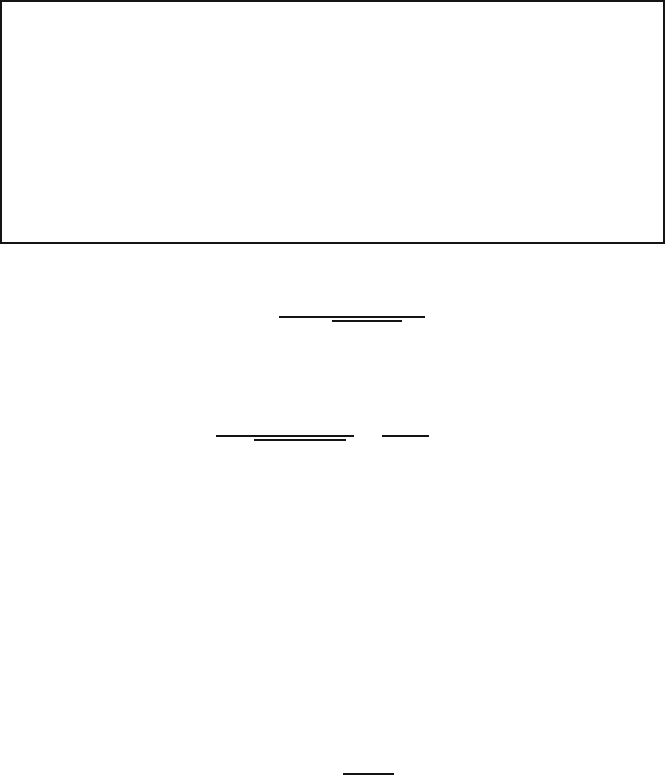
226 CHAPTER 16
Be Careful How You Say It
In conclusion to the example analysis in the text, we would say “There is a
strong and highly significant rank-order correlation between soil productivity
and number of villages per square kilometer (r
S
= .93, p <.001).” This informs
the reader that the relationship is positive (more villages in more productive
soil zones), what correlation coefficient was used, and just how unlikely it is
that the observed correlation would have occurred in this sample if there were
no correlation in the population from which the sample was selected.
r
s
=
∑
x
2
+
∑
y
2
−
∑
d
2
2
∑
x
2
∑
y
2
For the example in Table 16.1, then,
r
s
=
391 + 408 −56.5
2
(391)(408)
=
742.5
798.8
= 0.93
Spearman’s rank order correlation coefficient, then, between soil productivity
and number of villages per square kilometer in the Konsankoro Plain is 0.93, indi-
cating a strong positive correlation. (Values for r
S
can be interpreted in much the
same manner as those for Pearson’s r, although the two cannot be compared directly.
That is, a Spearman’s r
S
of 0.85 between two variables cannot be said to indicate a
stronger correlation than a Pearson’s r of 0.80 between two other variables.)
If there are no ties, then we can easily see that
∑
T = 0 (as in the case of number
of villages per square kilometer in Table
16.1). If there are no ties for either variable,
then, there is no need to go to the trouble of figuring t and T, and the entire equation
for Spearman’s rank correlation is considerably simplified:
r
S
= 1 −
6
∑
d
2
n
3
−n
SIGNIFICANCE
As usual, the question of significance is “How likely is it that the correlation
observed in the sample is not a consequence of a correlation in the population that
the sample was selected from but instead simply a result of the vagaries of sam-
pling?” Put another way, “How likely is it that a sample this size with a correlation
this strong could be selected from a population where there is no correlation?” For
samples of ten or more, this question can be answered with the familiar t table
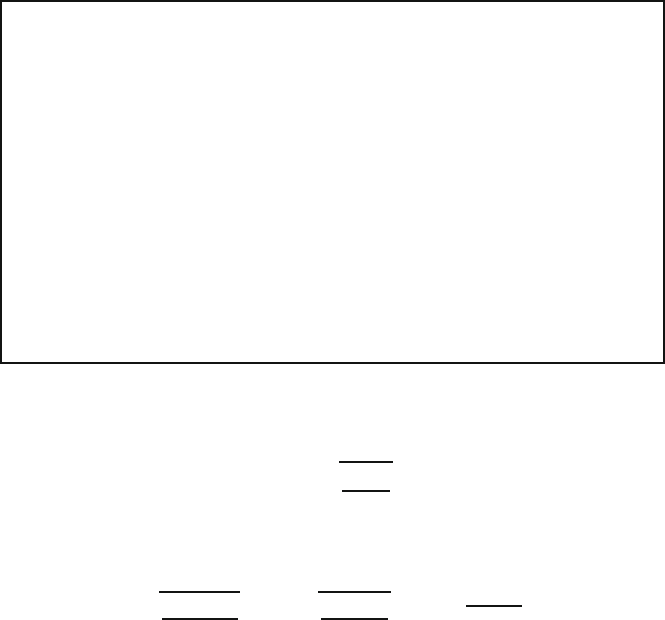
RELATING RANKS 227
Statpacks
Spearman’s rank correlation coefficient is only one of several similar
approaches to evaluating the strength and significance of rank order corre-
lations. Many statpacks provide options for calculating them all under the
heading of rank correlations or nonparametric correlations. Sometimes, r
S
is
calculated as an option with the same commands that produce Pearson’s r.
Even if your statpack does not provide Spearman’s rank correlation as a spe-
cific option, you still may be able to trick it into producing r
S
. It turns out
that Spearman’s rank correlation is equivalent to Pearson’s r calculated on
rankings. Consequently, you can provide rankings for each of your cases on
the variables you are interested in (the fourth and fifth columns in Table
16.1)
and use your statpack to perform a regression analysis on those variables. The
resulting correlation coefficient will be equivalent to r
S
.
(Table 9.1). The following formula gives the value of t:
t = r
S
n −2
1 −r
2
S
In our example,
t = .93
17 −2
1 −0.93
2
= 0.93
15
1 −0.86
= 0.93
√
107.14 = 9.63
Looking this value up in Table
9.1,usingtherowforn–1= 16 degrees of free-
dom, we discover that this value of t would be far beyond the rightmost column in
the table. The associated probability, then, would be far less than 0.001. Thus there
is far less than one chance in 1,000 that a sample of 17 would show a Spearman’s
rank correlation this strong if it had been selected from a population where there
was no rank order relationship between the two variables.
It should be noted that this example raises some complicated questions of what
population the data are a sample from. The sample consists of 17 soil zones that have
been surveyed. In order to accomplish the analysis we have just done, we must take
these 17 soil zones as a random sample from a larger and vaguely defined population
of soil zones that are or might be in the Konsankoro Plain. This sample has given us
what we take to be 17 separate and independent observations for the two variables,
and these 17 observations form the batch that we have analyzed as a sample. Strictly
speaking, this is not a random sample from a population of soil zones. Indeed, this
sample may represent a complete survey of the entire Konsankoro Plain. If we have
studied the entire population, it may seem to make little sense to treat the data as
a sample. In evaluating significance, however, we frequently engage in a sort of

228 CHAPTER 16
Table 16.2. Probability Values for Spearman’s Rank Correlation r
s
for Samples of Less Than 10
a
Confidence 80% 90% 95% 99%
.80 .90 .95 .99
Significance 20% 10% 5% 1%
.20 .10 .05 .01
n
4 .639 .907 1.000
5 .550 .734 .900 1.000
6 .449 .638 .829 .943
7 .390 .570 .714 .893
8 .352 .516 .643 .833
9 .324 .477 .600 .783
a
(Adapted from “Distributions of Sums of Squares of Rank Differences for Small Numbers of
Individuals” by E.G. Olds (Annals of Mathematical Statistics 9:133–148 [1938])
pretend sampling from an imaginary larger population. What we learn from the
evaluation of significance in a case like this is still, however, whether we should
have much confidence in the correlation observed. What we have found out in this
instance is that the correlation we observed is not at all likely to be pure random
chance at work in a small sample. We will consider this notion of pretend sampling
further in Chapter 20.
The formula for values of t is appropriate only if the sample is ten or more. If the
size of the sample is less than ten, then Table
16.2 should be used to determine the
associated probability.
ASSUMPTIONS AND ROBUST METHODS
Since Spearman’s rank correlation does not assume normal distributions, or rely on
means, standard deviations, or scatter plots, it is automatically highly robust. No
transformations or other modifications need ever be applied. This, in effect, makes
r
S
a very robust correlation coefficient that can be used instead of Pearson’s r when
such factors present problems for the application of Pearson’s r.
PRACTICE
You have excavated the remains of 12 dwellings in the village site of Teixeira. You
notice that some of the artifacts recovered from the dwelling areas are finer and
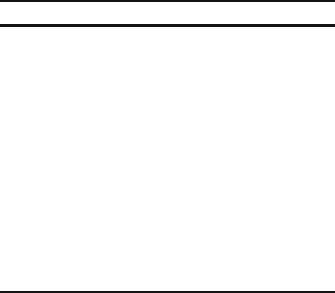
RELATING RANKS 229
Table 16.3. Floor Area and Artifact Status Index for
12 Excavated Houses from the Teixeira Site
Status index Floor area (m
2
)
23.4 31.2
15.8 28.6
18.3 27.3
12.2 22.0
29.9 45.3
27.4 33.2
24.2 30.5
15.6 26.4
20.1 29.5
12.2 23.1
18.5 26.4
17.0 23.7
fancier than others, and might indicate differences in status or wealth between the
households. You identify a variety of ornamental objects and pottery with incised
decoration as possible status indicators, and you count the number of such artifacts
in each household area per 100 artifacts recovered. This gives you an index of status
or wealth based on the artifact assemblages in the different households. You wish to
investigate whether this status index is related to the size of the dwelling structure
itself (pursuing the idea that wealthier families might have larger houses). The data
are given in Table
16.3
1. How strong and how significant is the relationship between house floor area and
your status index?
2. What sort of support do your observations provide for the idea that wealthier
households (as indicated by their possessions) had larger houses?

Chapter 17
Sampling a Population with Subgroups
Pooling Estimates .................................................................................. 234
The Benefits of Stratified Sampling ............................................................... 236
When the population we are interested in has subgroups that we are also interested
in separately, it is often useful to select a separate sample of elements from each of
the subgroups. For such purposes each subgroup is treated as if it were a completely
separate population. A sample of whatever size is needed is selected from each of
these separate populations, and the values of interest are estimated separately for
each population. Suppose that we have reliable information on the locations of all
sites in a region. No one has attempted to discover the sizes of these sites, however.
We could select a sample of the known sites and go make systematic surface collec-
tions in an effort to determine how large they are. These determinations could then
form the basis for estimating the mean site size for the region. If, in addition, the
region could be divided into three different environmental settings (remnant levees,
river bottoms, and slopes) we might be interested in estimating the mean site area
for each of the settings.
Table
17.1 provides information on a sample of sites for each of these three set-
tings, as well as a stem-and-leaf plot for each sample. The table gives N, the total
number of sites in each setting (the three populations sampled), and n, the number
of sites in each of the three samples. The stem-and-leaf plots show a single-peaked
and symmetrical shape for each of the samples, and their standard errors have been
calculated using the finite population corrector (Chapter
9) since the sampling frac-
tions are large. Multiplying these standard errors by the corresponding values of t
for 95% confidence and n −1 degrees of freedom gives us error ranges to attach to
the estimated mean site areas for each of the three settings. Thus we are 95% con-
fident that the mean area of sites on remnant levees is 1.71ha±0.32ha; in the river
bottoms, 2.78ha±0.31ha; and on the slopes, 0.83ha±0.32 ha.
R.D. Drennan, Statistics for Archaeologists, Interdisciplinary Contributions
to Archaeology, DOI 10.1007/978-1-4419-0413-3
17,
c
Springer Science+Business Media, LLC 2004, 2009
233
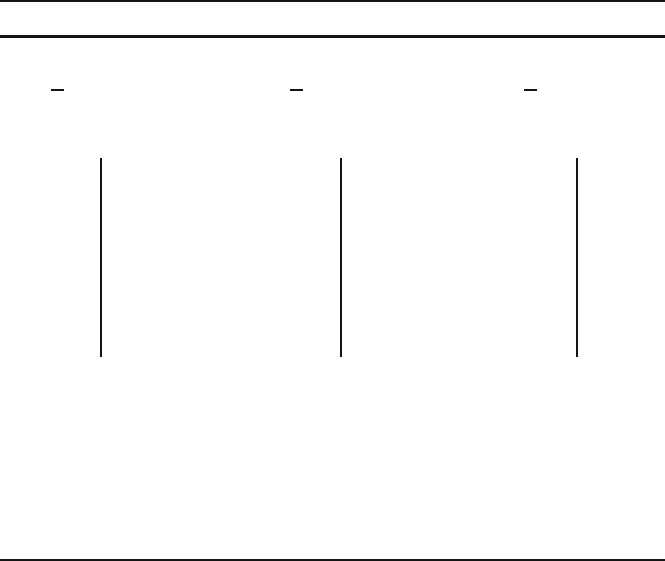
234 CHAPTER 17
Table 17.1. Site Areas (ha) in Three Settings
River Bottoms Remnant Levees Slopes
N = 53 N = 76 N = 21
n = 12 n = 19 n = 7
X = 2.78 X = 1.71 X = 0.83
SE = 0.14 SE = 0.15 SE = 0.13
3.3 2.9 0.7
2.7 4
1.7 4 1.3 4
2.1 3 81.33 1.2 3
3.8 3 134 2.1 3 20.63
2.7 2 7789 1.9 2 59 0.6 2
3.4 2 144 1.2 2 0113 1.2 2
2.9 1 82.5166779 0.2 1
2.8 1 2.1 1 0234 1 223
2.4 0
1.6 0 78 0 667
1.8 0
1.7 0 402
2.4 2.0
3.1 1.6
1.0
1.4
2.3
3.2
0.8
0.4
0.7
These estimates and their 95% confidence error ranges confirm what we might
well have suspected from looking at the three stem-and-leaf plots – sites in the three
settings have markedly different mean sizes, and the differences that we observe
between our three samples are not at all likely to be just the result of sampling
vagaries. Up to this point, we have done nothing more than treat these three samples
in the ways discussed in Chapter
9.
POOLING ESTIMATES
At this point, however, we might well want to consider the three samples together
in order to talk about sites in the region in general, irrespective of the settings in
which they were located. We cannot simply put all the sites from all three samples
together into one sample, though, and consider it a random sample of sites in the
region. Such a sample would most definitely not be a random sample of the sites in
the region because the selection procedures did not give each site in the region an
equal chance of selection. Of the 21 sites on the slopes, 7 (or 33.3%) were selected;
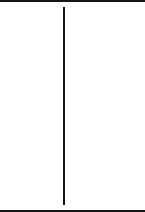
SAMPLING A POPULATION WITH SUBGROUPS 235
of the 53 sites in the river bottoms, 12 (or 22.6%) were selected; and of the 76
sites on remnant levees, 19 (or 25.0%) were selected. Thus river bottom sites had
less chance of being included in the sample (a probability of 0.226) than sites on
levees (a probability of 0.250), and levee sites had less chance of being included
than sites on the slopes (a probability of 0.333). The overall sample produced by just
putting these three separate samples together would systematically over-represent
slope sites and systematically under-represent river bottom sites. Any conclusions
we might arrive at about mean site area in the region as a whole based on such a
sample would be affected by these sampling biases.
What we must do is consider the larger problem one of stratified sampling,
as selecting separate samples from different subgroups of a population is usually
called. In this example, each of the three environmental settings would be a sampling
stratum. Each sampling stratum would form a population to be sampled separately
from the other sampling strata, just as we have done in this example. Appropriate
sample sizes and sampling procedures would be determined independently for each
sampling stratum, and the samples selected would be used independently to make
estimates about each of the parent populations. We have already done all of this. It
raises no new issues in sampling beyond those dealt with in Chapters
7–11.
Only at the last step, that of pooling the estimates made for each sampling stratum
into an overall estimate for the whole population must special steps be taken. In
the first place, having already discovered that sites in the three different settings
have rather different mean areas, we must consider whether it makes any sense
even to speak of the mean area of sites for the region as a whole. If the overall
population of sites had a shape with multiple peaks, it would be foolish to attempt
any analysis of the entire set of sites as a single batch. We do not, of course, have any
way of knowing for certain what the shape of the whole population would be, but,
since the sampling fractions in the three sampling strata are not wildly different, we
could look at a stem-and-leaf plot of all three samples together to get a rough idea.
Such a stem-and-leaf plot appears in Table
17.2. It is certainly single peaked and
symmetrical enough to make it meaningful to use the mean as an index of center
for the whole batch. Thus, we could consider it sensible to make an estimate of
Table 17.2. Stem-and-Leaf Plot
of Areas of Sites from
All Three Samples in Table
17.1
4
3 8
3
1234
2
577899
2
0111344
1
667789
1
0222334
0
66778
0
24

236 CHAPTER 17
the mean site area for all sites in the region by pooling the estimates for the three
sampling strata, as follows:
X
p
=
∑
N
h
X
h
N
where
X
p
= the pooled estimate of the mean, that is, the estimated mean for the
entire population, taking all sampling strata together,
X
h
= the mean of the elements
in the sample for stratum h, N
h
= the total number of elements in the population of
stratum h,andN = the total number of elements in the entire population.
For the example from Table
17.1,
X
p
=
(76)(1.71)+(53)(2.78)+(21)(.83)
150
=
294.73
150
= 1.96ha
Thus we estimate that the mean area of sites in the region as a whole (irrespective
of environmental setting) is 1.96 ha. We attach an error range to this estimate in
a similar fashion, by pooling the standard errors for the three separately selected
samples:
SE
p
=
∑
N
2
h
SE
2
h
N
where SE
p
= the pooled standard error for all sampling strata taken together, SE
h
=
the standard error for sampling stratum h, N
h
= the total number of elements in the
population of stratum h (as before), and N = the total number of elements in the
entire population (also as before).
For the example from Table
17.1,
SE
p
=
(76
2
)(.15
2
)+(53
2
)(.14
2
)+(21
2
)(.13
2
)
150
=
13.87
150
= .09
This pooled standard error is treated like any other. To produce an error range for
95% confidence, we would multiply it by the value of t corresponding to 95% confi-
dence and n−1 degrees of freedom where n is now the number in all three samples
considered together, or 38. This value of t is 2.021, so we would be 95% confident
that the mean area of all sites in the region is 1.96ha±0.18 ha.
THE BENEFITS OF STRATIFIED SAMPLING
Stratified sampling can sometimes offer a more precise estimate for an entire pop-
ulation than simply sampling the entire population directly. This makes stratified
sampling potentially useful even in situations where we might not be much inter-
ested in the separate means of the sampling strata. The possible increased precision
comes from providing a smaller error range in the situation where a population
has subgroups whose means differ somewhat from each other but which have very
SAMPLING A POPULATION WITH SUBGROUPS 237
small standard deviations when each is taken separately. That is, if the subgroups
each form batches with smaller spreads than the population as a whole, the error
ranges associated with the estimates of their means may be quite small. When these
are pooled into an error range for the estimated overall population mean it may well
be smaller than the error range that would have been obtained from a single sample
drawn randomly from the population as a whole. Sometimes this effect is strong
enough to outweigh the opposite effect resulting from the fact that the samples from
the subgroups are each smaller than the total sample. If a population is easily divided
into subgroups whose means may be different and whose members vary little from
each other, then it is worth considering sampling that population by those subgroups
instead of as a whole, even if the subgroups are of little intrinsic interest separately.
